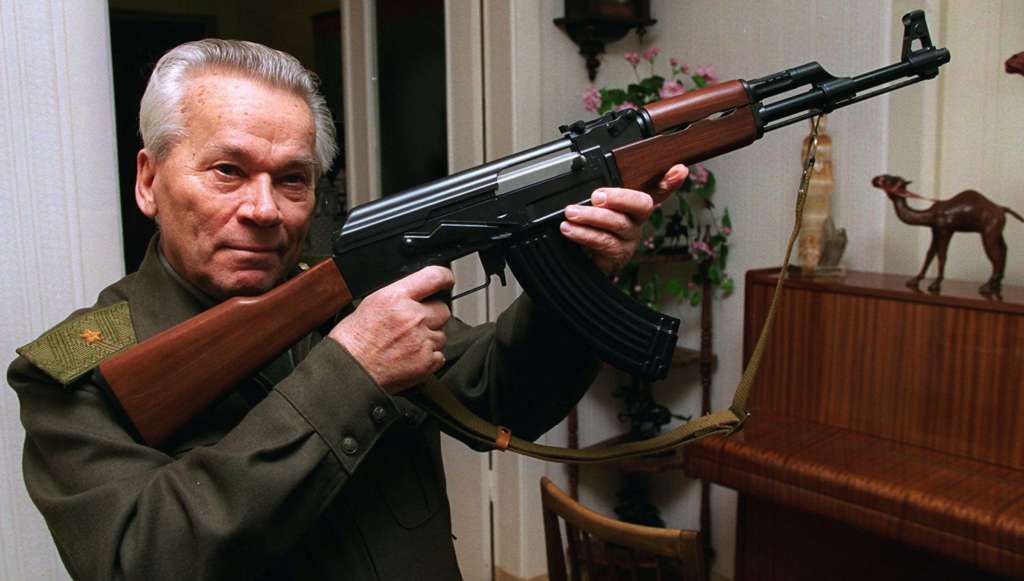Washington-Time and again it’s the same. A lone gunman or a small group of killers with rifles commits spectacular crimes that seize the attention of the world.
The list reaches back decades: the killing of Israeli athletes at the Munich Olympics in 1972; the school takeover in Beslan, Russia, in 2004; the attacks in Mumbai, India, in 2008; the mall assault in Nairobi, Kenya, in 2013; the killing of more than 100 people in Paris in 2015.
Often the rifles are variants of the AK-47, the world’s most abundant firearm, an affordable and simple-to-use assault rifle of Soviet lineage that allows a few people to kill scores and menace hundreds, and fight head-to-head against modern soldiers and police forces.
In recent years they have also been descendants of the AR-15, the American military’s response to the Kalashnikov’s spread. Semiautomatic versions of the AR-15 were used by sympathizers of the ISIS in San Bernardino, Calif., in 2015, and a Mini-14 and an MCX, rifles that fire the same cartridge as the AR-15 and compete with it for market share, were used in the mass shootings in Norway in 2011 and in Orlando, Fla., in June.
In the hands of terrorists, military-style rifles have repeatedly been used for swiftly killing on a large scale. How did the Kalashnikov — a disruptive technology that flooded the world almost three generations ago and still retains an outsize role in organized violence — become such a ready amplifier of evil and rage? In what ways did it drive the AR-15 and its competitors to such prominence, too?
The answers reach to the years immediately after World War II, when the Soviet Union was developing multiple weapons for multiple roles. As Soviet scientists worked on nuclear arms that would freeze borders in place under the fear of total war, teams of gunsmiths and engineers set out in a contest to design a conventional weapon — a rifle — that would combine the rapid-fire ferocity of machine guns with the portability of lighter-weight arms. The weapon was to be a conceptual copy of the sturmgewehr, which Nazi Germany had fielded late in the war.
In the evaluations and field trials that followed, Senior Sgt. Mikhail T. Kalashnikov, a wounded veteran of tank warfare on the Soviet Union’s western front, was credited with developing a prototype for a medium-powered rifle capable, like the sturmgewehr, of both automatic and semiautomatic fire.
The AK-47, with an effective range beyond the length of a pair of football fields, was accepted in 1947. A few years later, a lighter and easier-to-manufacture update, the AKM, entered mass production in Russia, and was on its way to becoming the standard rifle for almost all Communist ground forces. The weapon soon left its mark.
The Kalashnikov line was shorter and lighter than traditional rifles. It was inexpensive to manufacture, built for durability and reliable to an extraordinary degree. With few moving parts, and a design that made its disassembly and reassembly almost intuitive, its basics could be mastered by all manner of combatants — from traditionally instructed conscripts to almost wholly untrained guerrillas — in very little time.
The cartridges were smaller than traditional rifle cartridges, which meant that a fighter with a Kalashnikov could carry more ammunition, and be more deadly, than riflemen of previous eras. The rifle’s medium-power cartridges also meant the weapon had little recoil, allowing trainees to learn marksmanship at standard combat ranges with relative ease. These qualities contributed to the weapon’s popularity among those who carried it; in much of the world the Kalashnikov became the everyman’s gun.
The Kalashnikov’s physical characteristics alone do not explain its prominence. It was the vast scale of rifle and ammunition manufacture in mammoth arms plants that drove the Kalashnikov to its status as one of the most immediately recognized products of the Communist era, one of the most readily identifiable objects in the world.
The maps show the many ways in which it spread. Production began in the Soviet Union in the 1940s before expanding to the vassal states of the Warsaw Pact and to China, North Korea, Yugoslavia and beyond. Tens of millions of the rifles were churned out in planned economies, whether they were needed or not. In the U.S.S.R., where Kalashnikovs were cast as tools of the Motherland’s defense, they entered the civic fabric. Students trained with them in schools.
Ammunition plants were built in countries where the rifles were manufactured, ensuring ready supplies. More state forces adopted the weapons and began cartridge production, too. The rifle swept across much of the world. In the 1970s the Soviet Army introduced a new model, the AK-74, which fired a smaller, faster cartridge. Millions of older Kalashnikovs became officially obsolete, freeing them for global trade. Taken together, a series of industrial decisions in planned economies had created conditions for near ubiquity.
The spread changed modern warfare. As Communist governments passed Kalashnikovs to allies and proxies the rifles assumed an unexpected role: battlefield leveler.
Vietnam offered the breakout. Africa had been colonized by small detachments of European soldiers turning machine guns against larger local forces that lacked access to equivalent weapons. In Vietnam, much of that advantage was gone. Guerrillas armed with Kalashnikovs fought toe-to-toe against foot soldiers of a superpower. Modern expeditionary units, facing automatic fire from inexpensive rifles carried by peasants, had met their close-quarters match. Often their ambitions were checked.
The Kalashnikov’s superiority to the American M-14 in jungle warfare in Vietnam spurred Robert S. McNamara, the defense secretary at the time, to push the Pentagon to hurry production of a new American assault rifle, the AR-15, which became known as the M-16. The decision would propel assault rifles to their current position as standard military firearms across the world.
The New York Times
